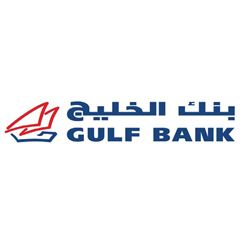KUWAIT: Standard and Poor’s (S&P) Global Ratings has revised the outlook of Gulf Bank’s Credit rating to “Positive” from “Stable” and affirms its A-/A-2 long and short-term counterparty credit ratings on the Bank. S&P Global Ratings announced in its recent research update of Gulf Bank that the Bank has improved its capitalization and reduced the risk on its loan book over the past three years.
They now believe the bank can maintain a risk-adjusted capital (RAC) ratio above 10%, assuming a normalizing cost of risk, a marginal improvement in margins, and growth of more than 5% in lending over the next two years.
In addition, Gulf Bank has continued with initiatives to improve its risk profile. The Bank has made visible progress in resolving its large legacy problems as shown by recoveries on old problem loans in 2016. S&P Global Ratings affirmed their ratings because of Gulf Bank’s business position and stability, derived from its status as the fourth-largest commercial bank in Kuwait.
Gulf Bank has market shares in loans and deposits of close to 10% and is improving its revenue mix. In S&P’s view, the Bank has delivered on its commitment to turn around its business model since the global turmoil in 2009. Gulf Bank’s funding and liquidity profile will remain resilient to the low oil-price environment and support our ratings, said S&P Global Ratings. The bank’s broad liquid assets sufficiently cover short-term wholesale funding needs.
The ratings continue to reflect S&P Global Rating’s view of Gulf Bank’s high systemic importance in Kuwait and the Kuwaiti authorities’ highly supportive stance toward the banking sector. As a result, the long-term rating on Gulf Bank benefits from three notches of uplift, reflecting their view of a high likelihood of extraordinary government support for the bank if needed. The positive outlook reflects a one-inthree likelihood that Gulf Bank will maintain the positive momentum in capital and risk over the next 24 months. S&P mentioned that the rating of the Bank will be raised if the RAC ratio sustainably exceeds 10%, most likely through improved capital generation and moderate dividends.











